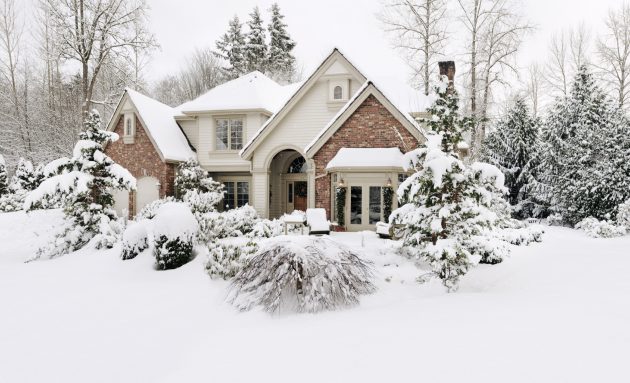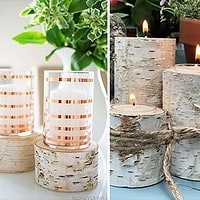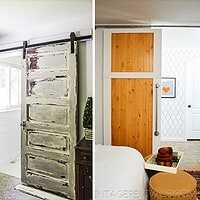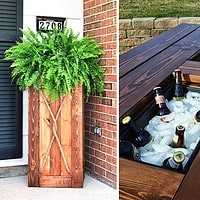It is never too early to start preparing your pipes for colder weather. Don’t wait until your pipes frezze in the winter before you take precautionary steps. Snow and ice can wreak havoc yards, roofs, and pipes. Sidewalks and driveways become dangerously slippery.

Suburban house in the snow
Preventative Measures
Homeowners in colder climates to be aware of ice dams, and how to prevent them. The heat from your home can cause the snow on your roof to melt. The melted snow slides down the roof and then refreezes. A barrier of ice is created that traps water. It can cause water to find ways to seep into your home.
Make sure to clean your gutters as well. They can exacerbate an ice dam problem. You should also clean your roof of snow after major snowstorms that drop six inches or more of snow. You can do this yourself or hire a company. Make sure your attic is properly insulated. If your attic is not properly insulated and vented, it can release a lot of heat. Another option is to install deicing cables on your roof.
Winterizing pipes and sprinklers is a must. If you live in a warmer climate and are expected freezing temperatures, you might be at a greater risk. Any outdoor pipes need to be wrapped or insulated in some way. This includes faucets. There are many products on the market that will get the job done: foam rubber sleeves, heating tape, and fiberglass insulation. Make sure to insulate in pipes in colder areas of your home like cabinets and crawl spaces.
If you have a vacation home, it is wise to winterize your home before leaving. This requires shutting off the water and draining all the pipes, toilets, sinks. You will also need to add anti-freeze. Leaving a small trickle of water running can also help relieve pressure on pipes if they do freeze.
If a major snowstorm is predicted, salt, deicing pelts, or sand your sidewalk and driveway. You should also sprinkle salt on any outdoor stairs to prevent ice from forming. Check regulations in your area. Some cities have outlawed salt for environmental reasons. You might also need to shovel the snow right after a storm.
Protect your plants and flowers with a nice layer of insulating mulch. Cover plants with cloth, tarps, or burlap can help protect them from the cold. Mulch helps prevent roots from freezing.
Thawing Pipes
Sometimes, despite your efforts, you end up with a frozen pipe. It is important to thaw pipes as quickly as possible. When water freezes, it expands and may cause your pipes to burst. It is important that you thaw the pipes correctly, though.
First, locate the frozen pipe. If you turn on a faucet and no water comes out or it is a drastically reduced flow, a pipe leading to that faucet is most likely frozen. You might see a slight bulb on some frost on the outside of the culprit.
Open the faucet before you begin the thawing process. Make sure to open both hot and cold handles. This will help relieve pressure on the system. Begin the process closest to the faucet and work your way back. You don’t want water to get stuck behind an ice blockage and create pressure. You can use a hair dryer, heat lamp, hot towels, or electrical heating tape to thaw exposed pipes. If the pipe is not exposed, you might have to turn the heat up on the property, use an infrared lamp, or possibly cut out a section of the wall.
Winter weather can cause you a major headache if you don’t prepare for the cold weather. It is much easier to implement preventative measures than to deal with a frozen or burst pipe.














